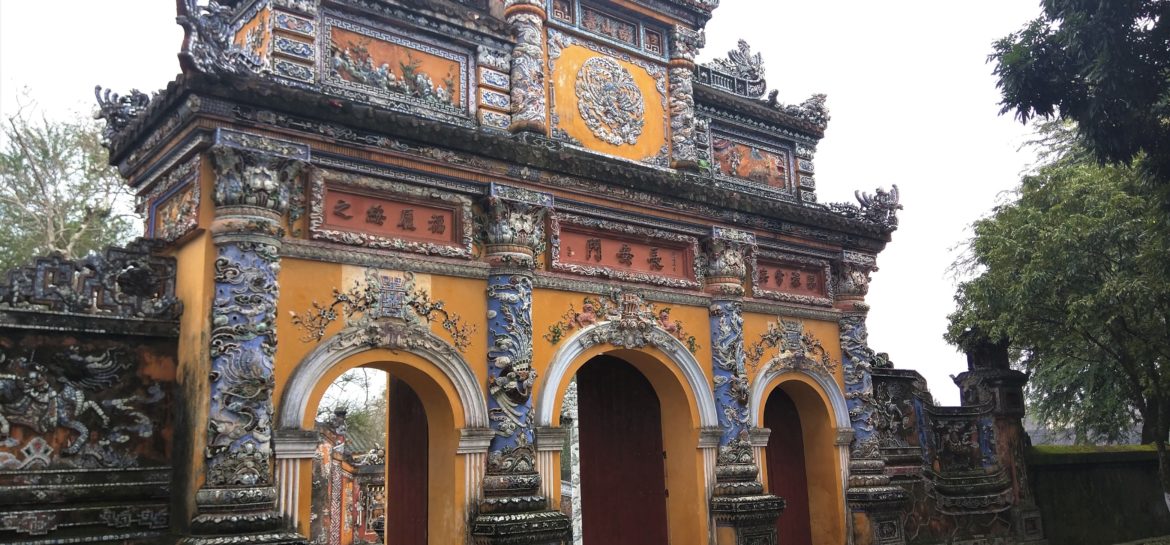
It’s odd that my memories of Vietnam will not be about the food. I love Vietnamese food and was eagerly awaiting our experiences with the local cuisine. Yet for some reason, these expected moments of culinary awe were few. The cliched truth is that the best meal any of us had during our visit to Vietnam in February was at a roadside noodle shop in Khe Sahn. At this little unnamed restaurant, tucked away from all tourists, while sitting on plastic stools and looking out over a quiet, rainy street, we quietly enjoyed a piping hot bowl of delicious noodle soup,


Beyond the nagging voice in my head that I still hadn’t written fully about our time in Vietnam, I was reminded of our visit recently when were stunned by the news of Anthony Bourdain’s death. Our family had spent many evenings watching his shows. His brusque yet affable candor and his openness to different cultures made us eager to experience similar adventures. While Bourdain was undoubtedly driven by a love of food – especially in Vietnam – often his interaction with food seemed to take a secondary purpose to the people and places he was visiting. Similarly, in our search for the perfect Vietnamese food of our imagination, we found what was for us the more powerful impact of Vietnam itself.
Central Vietnam is not as commonly visited as either Hanoi or Ho Chi Minh City (commonly still referred to as Saigon) but it does still boast a few “must see” locations on the tourist track. The largest central Vietnamese city of Da Nang offers plenty on its own, but it tends to be the smaller boutique cities of Hue and Hoi An that attract the visiting tourists.
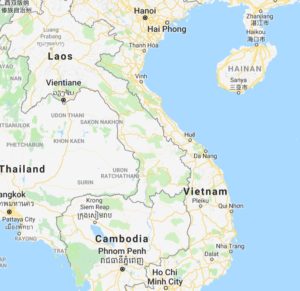
We spent three days in Hue while using it as a jumping off point to see Khe Sahn. Hue is situated near the coast to the north of Da Nang and as the former capital of Vietnam and the royal home to the Nguyen Dynasty Emperors, is a cultural and historic landmark complete with a walled Imperial City.
After a home-made breakfast at our hotel, complete with coffee, eggs, and a baguette, (the French influence in Vietnam is still visible) we walked through the streets of Hue past beautiful riverfront parks and vendors selling acres and acres of flowers for the upcoming Tet celebration.
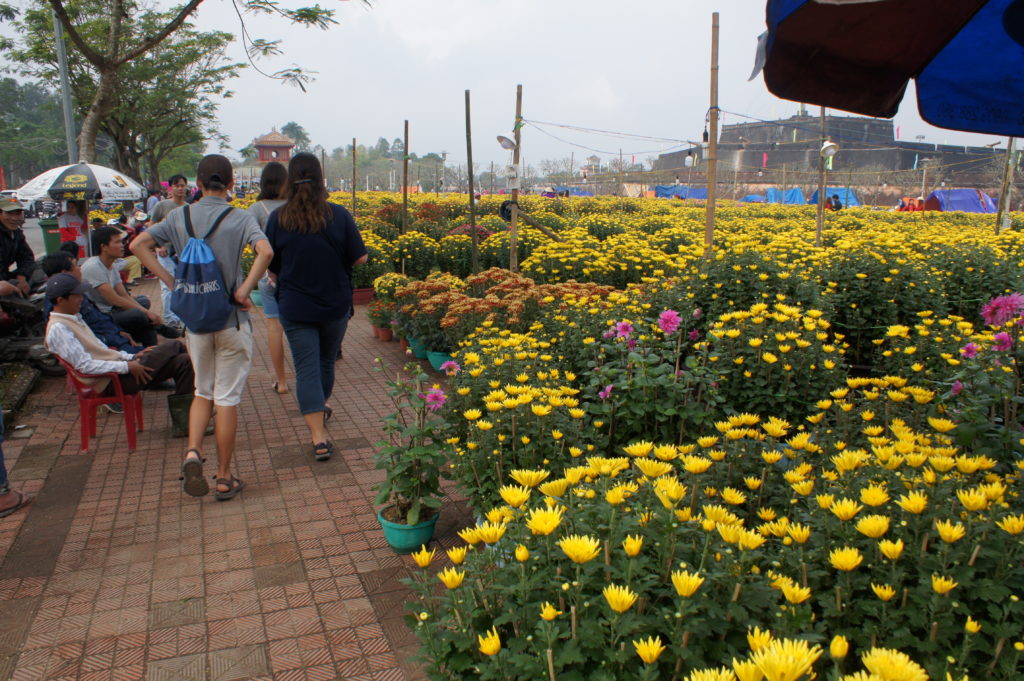
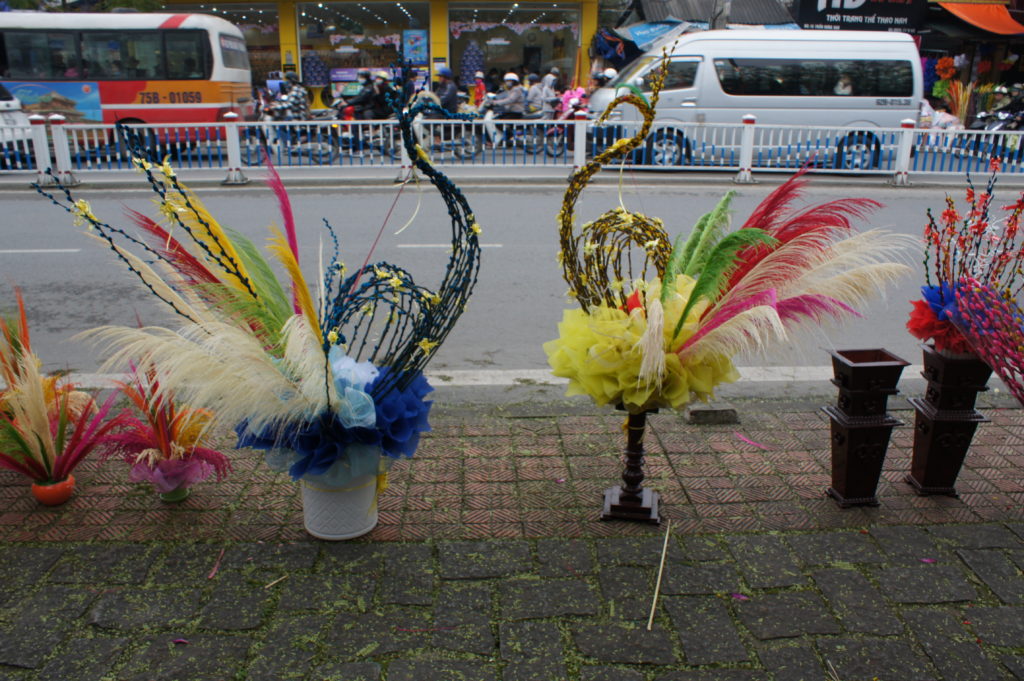
Our visit to The Imperial City enchanted us for several hours as we explored the city’s vast expanse of colorful and old dynastic homes and meeting halls. While in the city we weaved our way in and out of even more elaborate courtyards and alleyways.
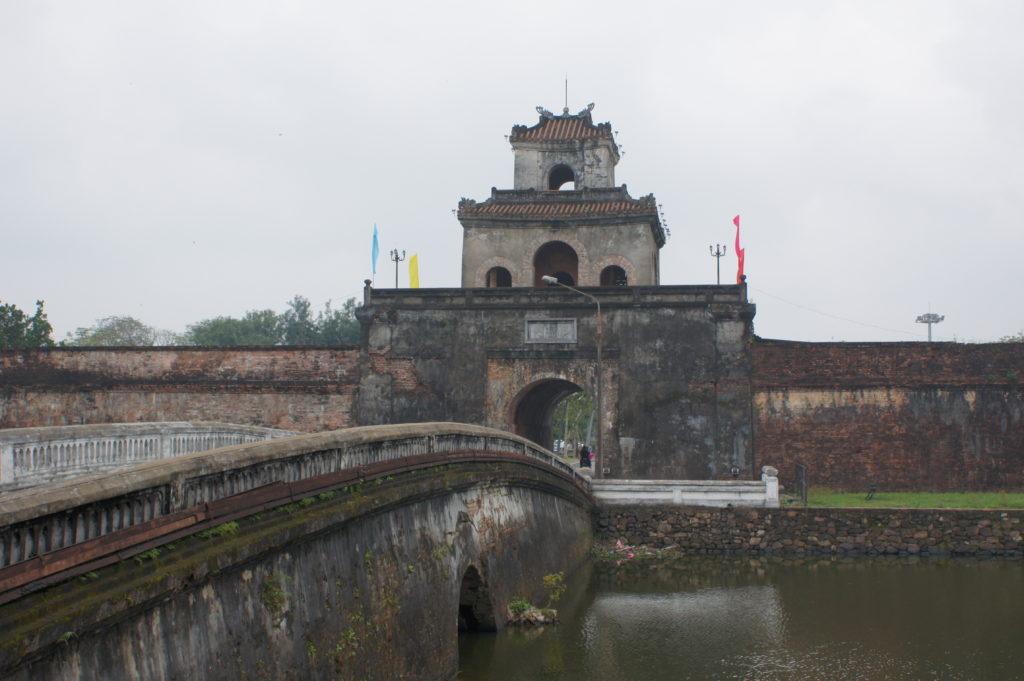

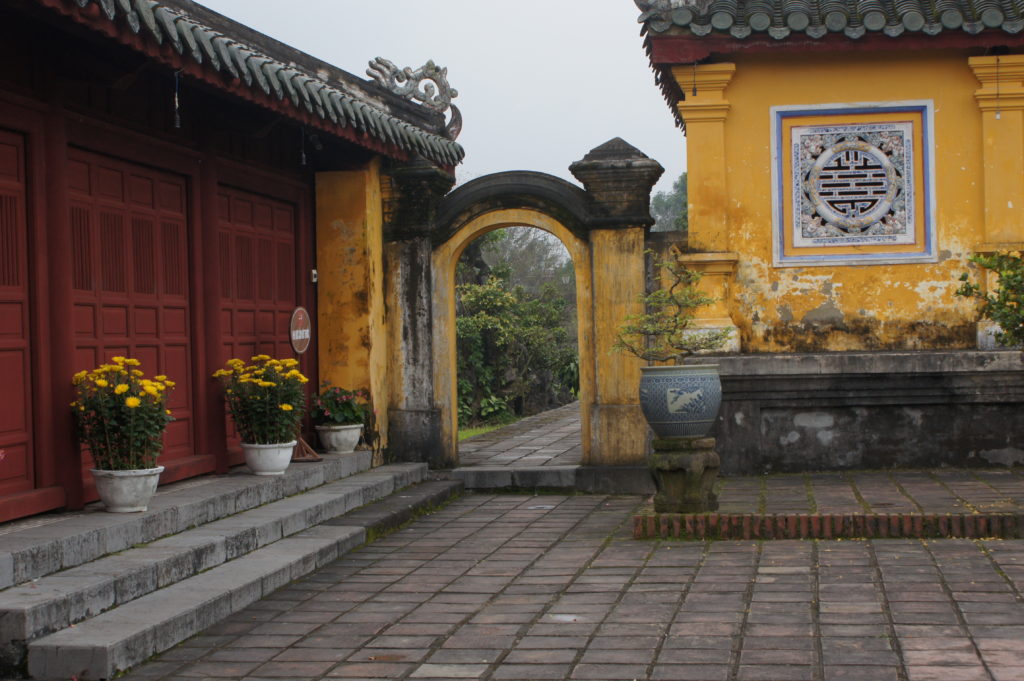

Back out on the street, seas of motorbikes crowded the streets, often with 2 to 3 people on each at a time. If we thought China had prepared us for mopeds and bicycles, we were wrong. Nothing compares to motorbike traffic in Vietnam. This country of 95 million people is said to have at least half of that number (45 million) in registered motorbikes. We were told us that as the economy improved, people purchased first bicycles and then motorbikes for transportation. Cars are just now becoming affordable, but the motorbike is still preferred. As larger systems of mass transit are not yet in place, it seems the motorbike is here to stay.

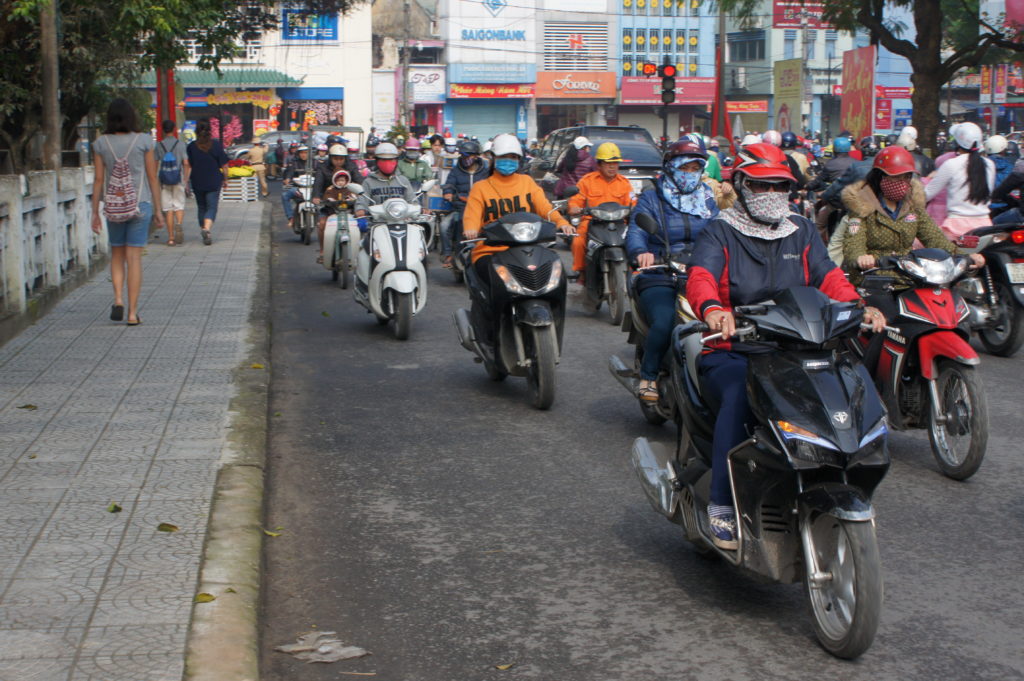
On our way back to our hotel, we stumbled upon a large open-air market and were happy to wander the alleyways and coves of that market looking at and sampling strange fruits and wares. I noticed a small dog running between the stalls. After I caught a longer look at its hairless tail as it disappeared under a curtain separating two store fronts, I realized it wasn’t a dog. When I told our guide the next day about this rat, he laughed and said, “A small dog, well that’s small rat.”
Later that night, we ventured out for dinner to a nearby restaurant for a local meal of Bahn bot loc, a traditional tapioca dumpling filled with seafood and steamed in banana leaves.

Just south of Hue lies what is purported to be the most beautiful coastline in all of Vietnam. As Vietnam is essentially ALL coastline, that’s saying something. On our drive down the coast to Hoi An, we noticed fisherman in a bay and stopped to see them as they took in their catch. The industriousness of these fisherman was notable as we saw that they were farming mussels and clams off the ubiquitous bike tires.
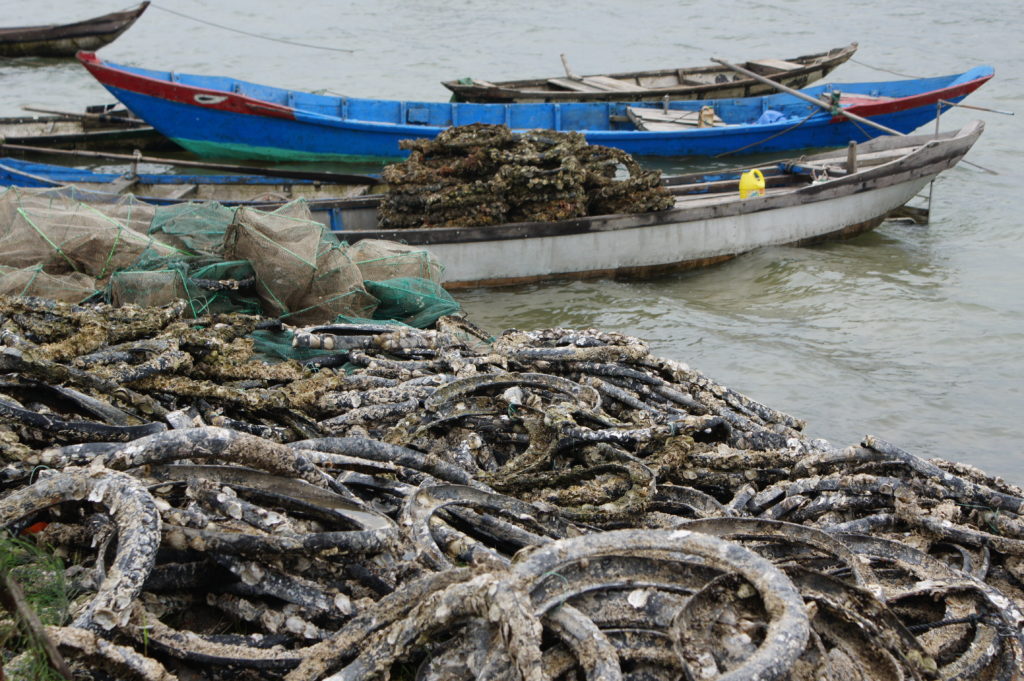
At another wayside stop, we climbed up an old abandoned US military bunker for a sweeping view that covered both the ocean and bay. Looking around we saw, coming in to focus out of the misty clouds hugging the mountains, a woman standing atop what might have been a machine gun turret, dressed in full wedding attire as she posed for photos.
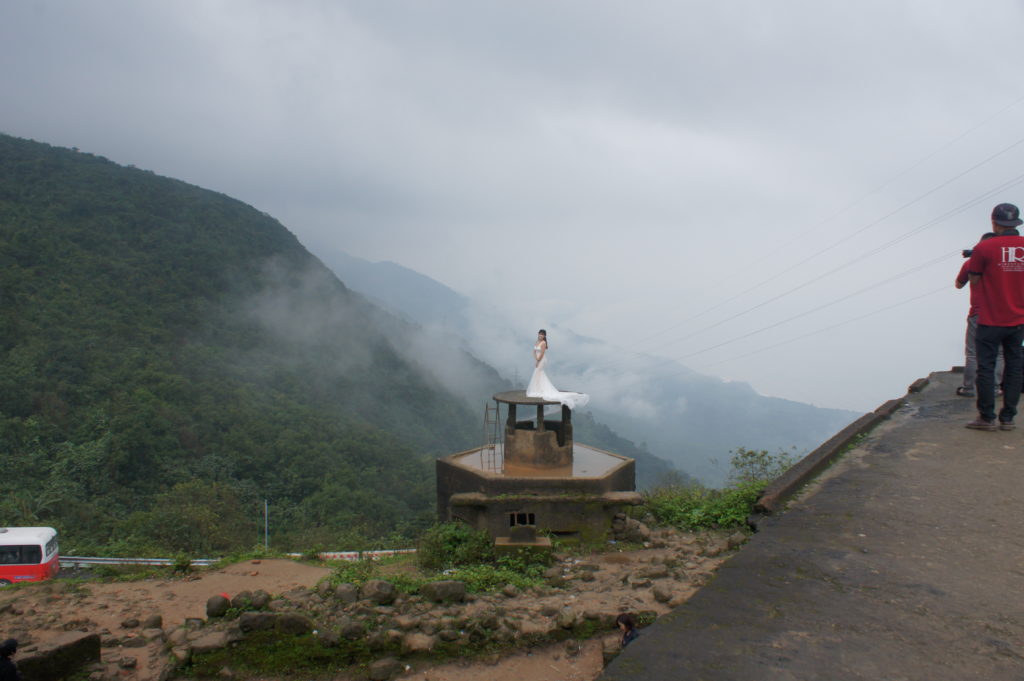
As our family celebrates the spirit of Anthony Bourdain while re-watching Parts Unknown, I’m particularly drawn to his explanation of what makes a good traveler, said when describing a friend and colleague – “He is like all good travelers, relentlessly curious and without fear or prejudice.” Letting expectations go and being open to what travel brings, as our trip to Hue showed, reminds us that this is an attitude we should all strive for in travel and indeed life.